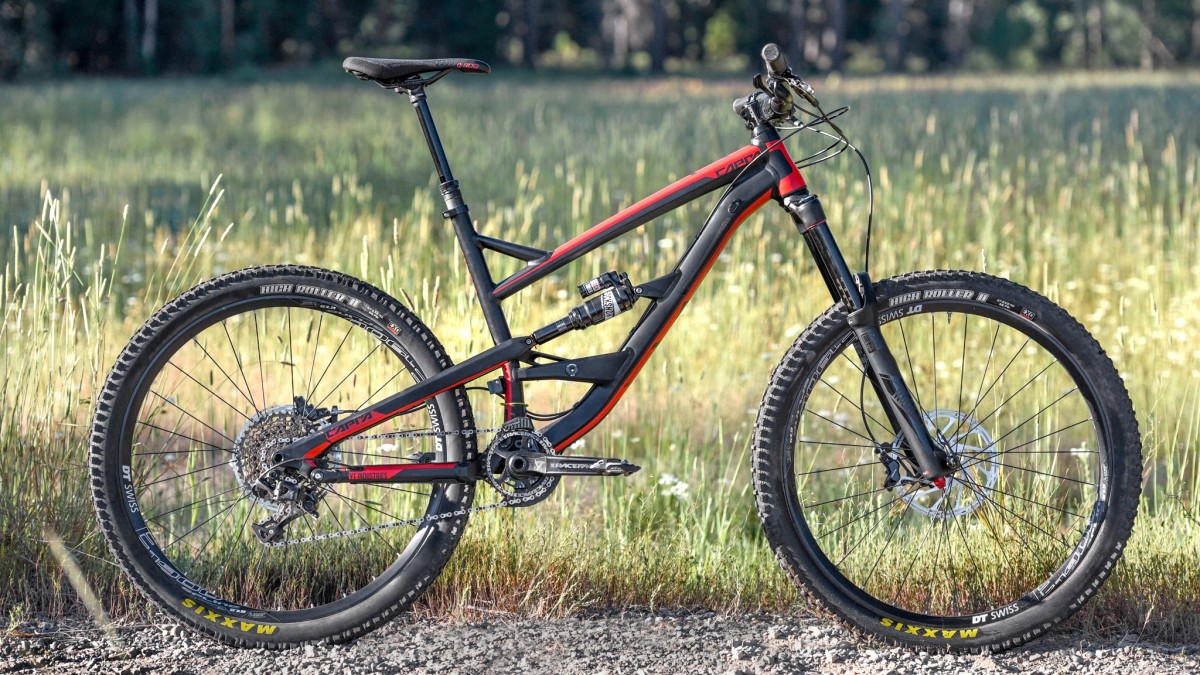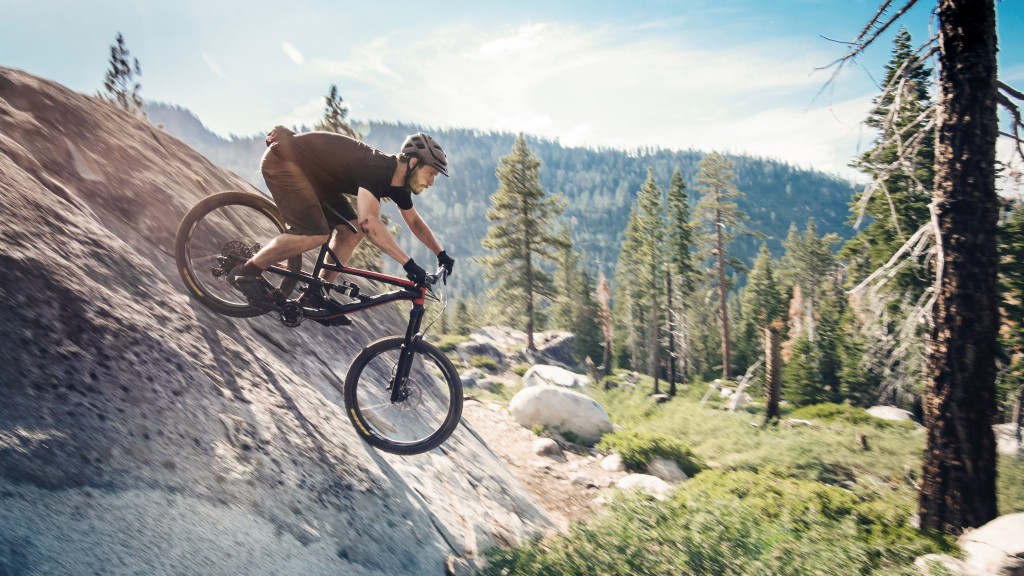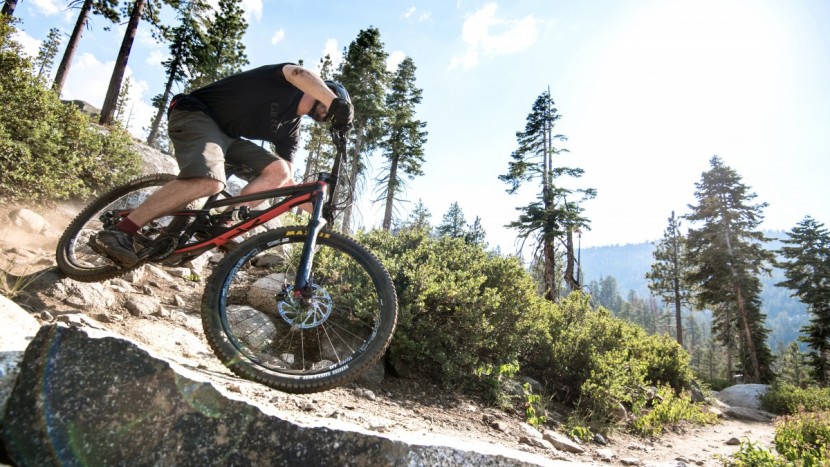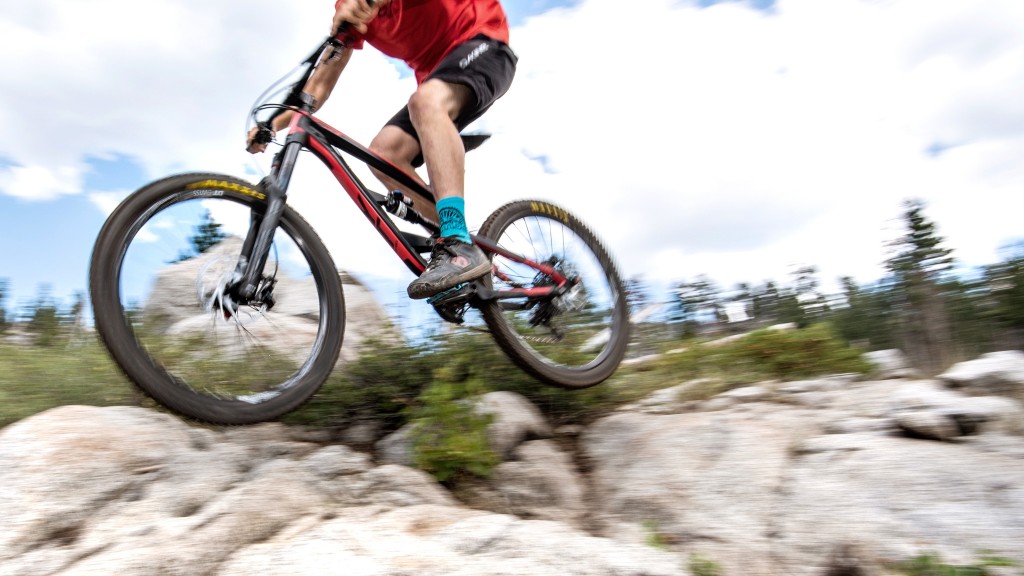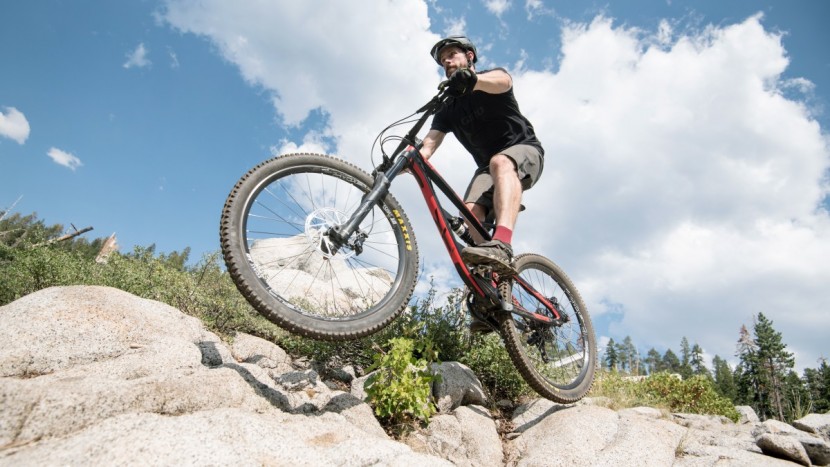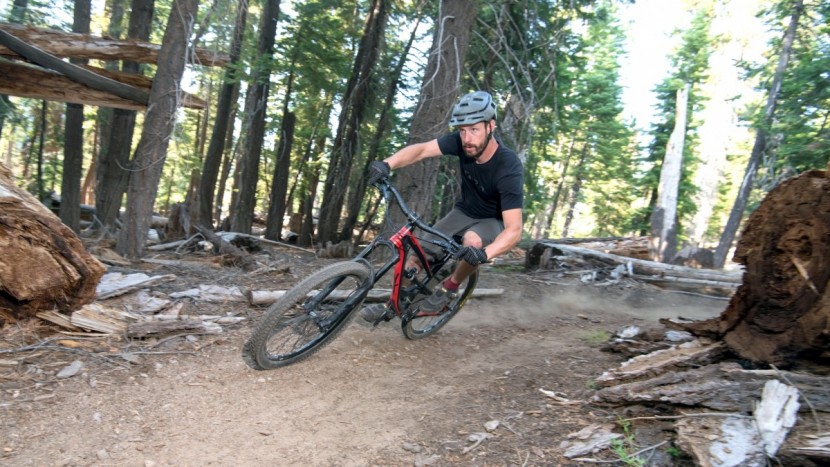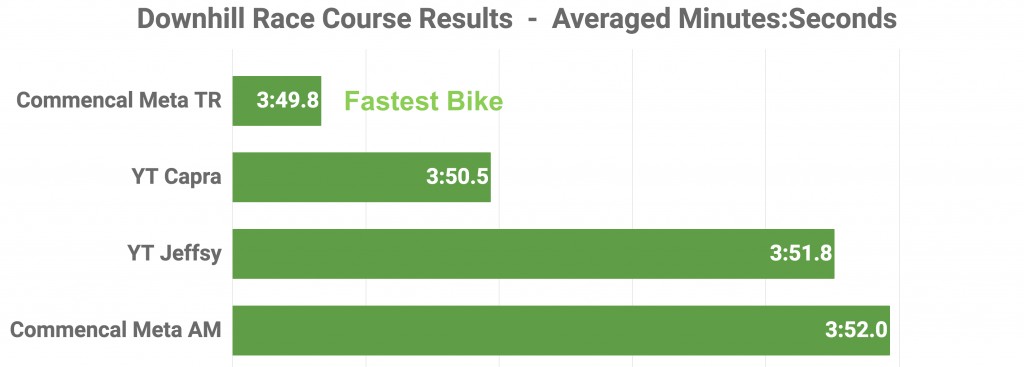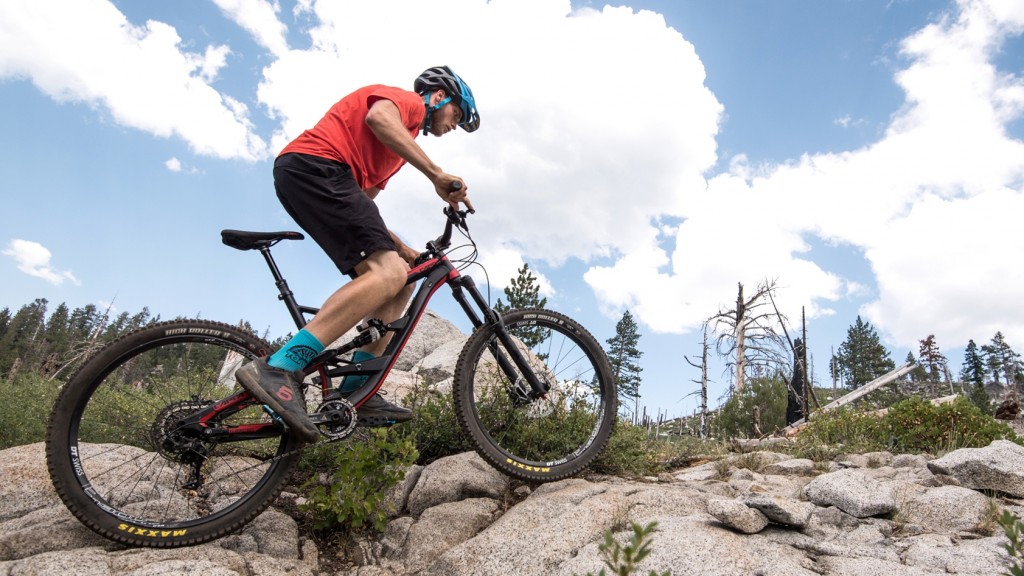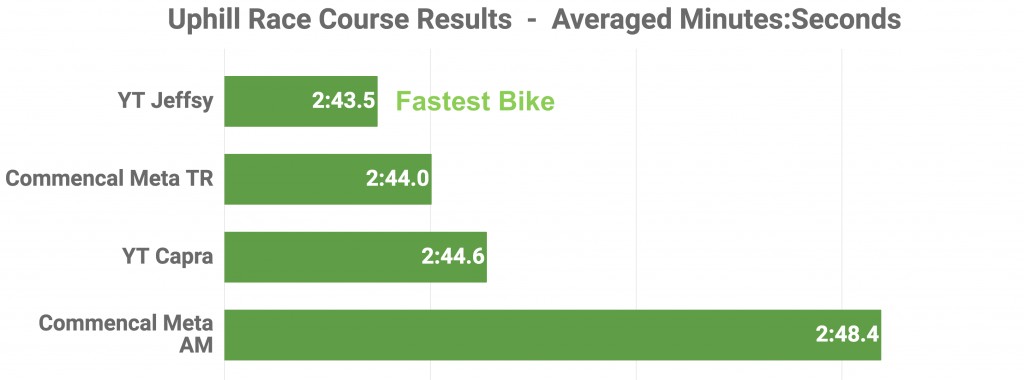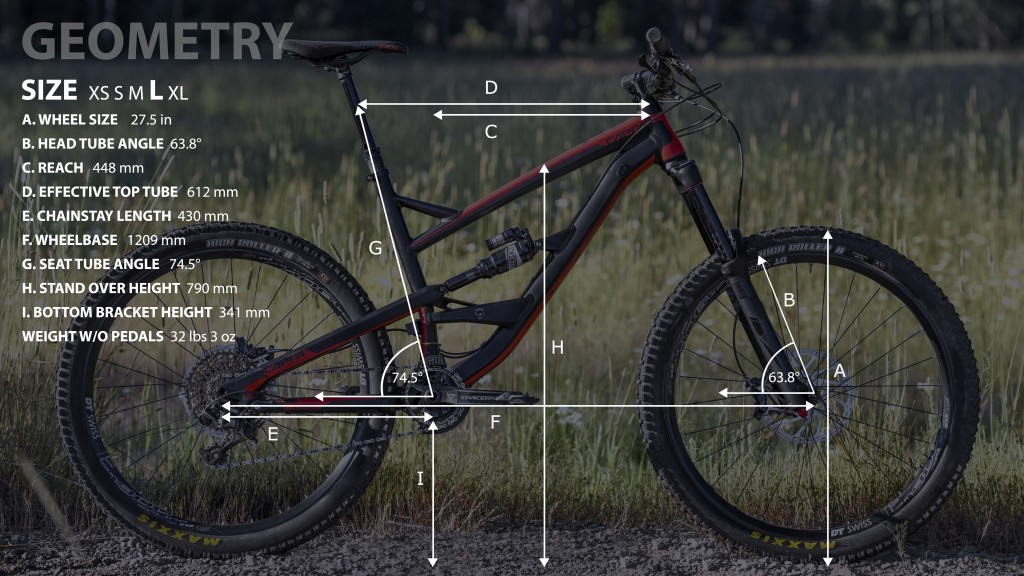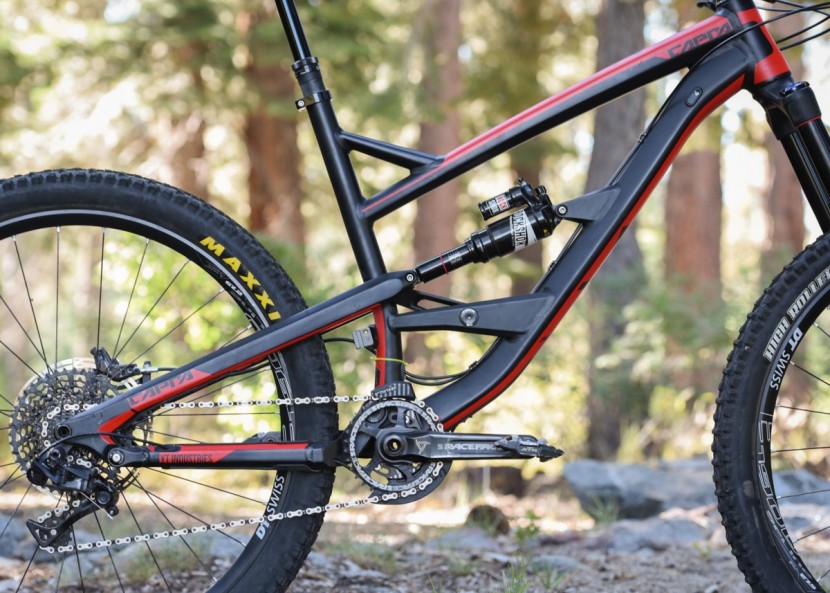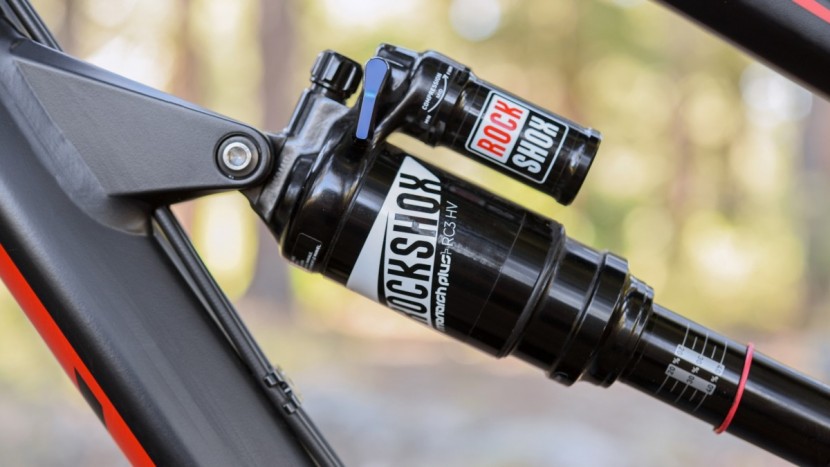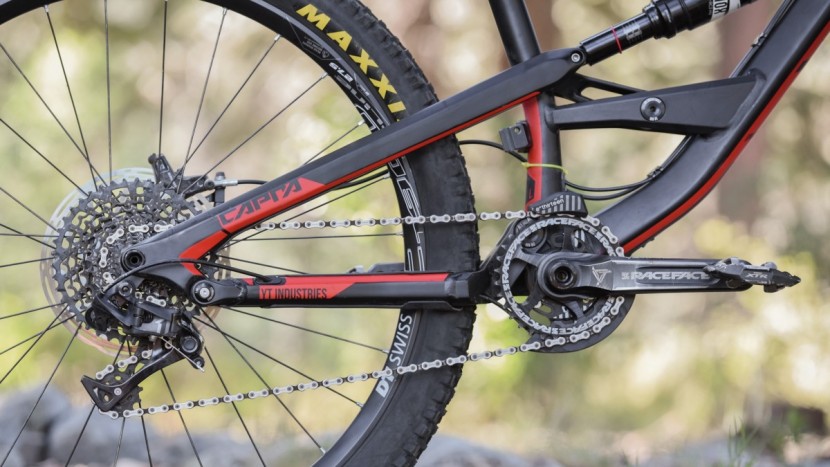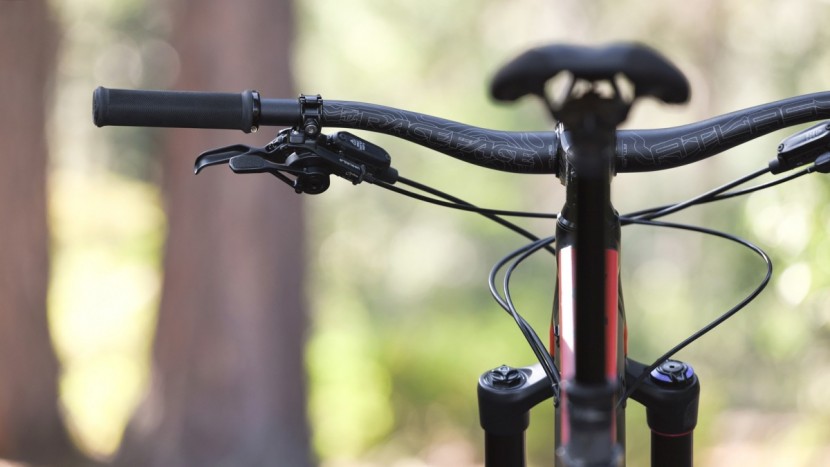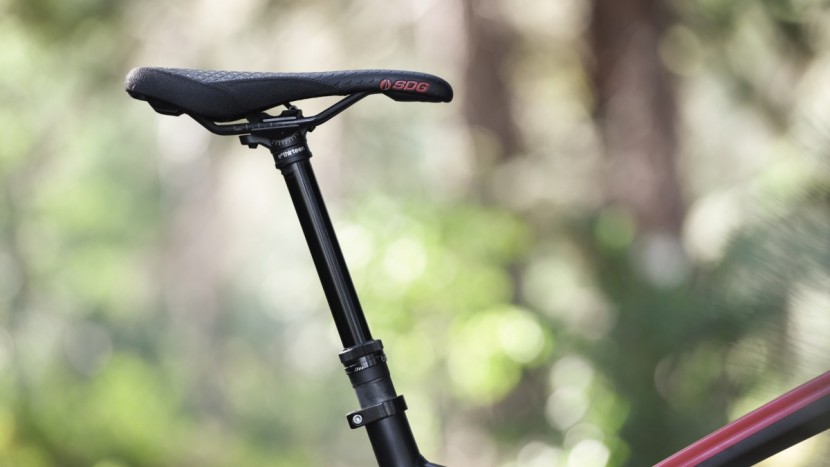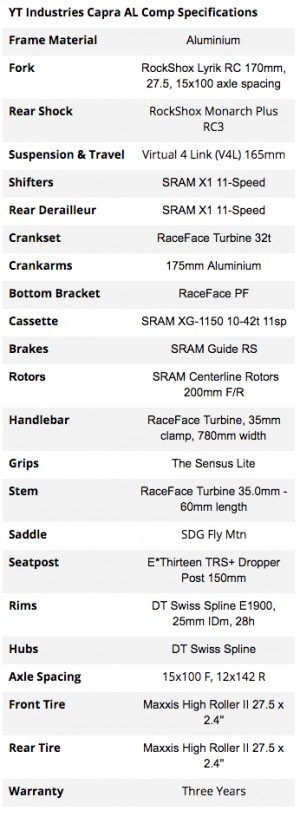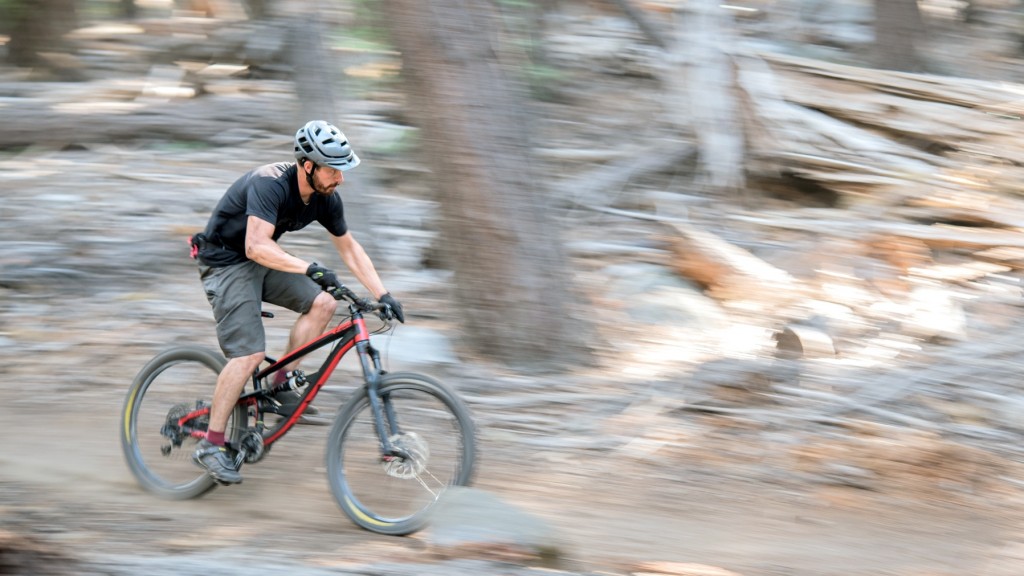YT Capra AL Comp 2017 Review
Our Verdict
Our Analysis and Test Results
Analysis and Test Results
Five professional bike testes rode four consumer-direct mountain bikes for ten weeks in the Sierra-Nevada mountains. We tested the Capra AL Comp against the playful 2017 Commencal Meta AM 4.2 Essential, long-day loving 2017 YT Jeffsy Al One, and the playful and capable 2017 Commencal Meta TR 4.2 Essential for trail-thrashing supremacy. We ranked the bikes by their fun factor, downhill, and climbing skills and build quality. We also raced them against one another using our objective benchmarking time trail process. We scored the YT Capra a 59 out of 100 to finish last in our test.
Fun Factor
The YT Capra is a fun bike for riders who appreciate utility. The harsh rear end created by an exceptionally progressive suspension design doesn't conjure up the most smile-inducing downhill experience. Still, the Capra is a more than capable descender. While it may not be the lightest bike, this slack enduro sled is a respectable climber. The solid pedal platform creates a fun ride on flat and twisty terrain as well. The result? A well-rounded bike that can perform dutifully in nearly any situation. Capability and utility in an insanely well-spec'd bike for $2,999? Sounds fun to us.
The Capra is a reasonably playful ride for a bike outfitted with a measured 63.8-degree head tube angle and 1209mm wheelbase. The smaller cockpit puts riders in an easy position to yank the bars into a wheelie or bounce it off of a stump or rock. There is no debating this husky bike takes a fair bit of body language to get it to react quickly or aggressively. Still, steering is responsive, and riders can change lines without too much hassle. This bike certainly can't match the sporty and peppy feel of the Commencal Meta TR.
Riders who are considering purchasing a Capra are likely interested in blasting some bike park laps. We piloted our test bike down local jump lines and flow trails. The Capra's shorter running length compared to the Commencal Meta AM works in its favor to help it fit on jump faces and transitions. This bike is composed in the air and is easy to balance. Its strong suit appears to be maching into berms and flowy sections of trail where you are not diving too deep into its travel. In addition, the progressive suspension keeps you higher in the travel which is beneficial to holding speed on fast trails. Still, the 2017 Meta TR is the most fun bike through the berms
The Maxxis High Roller II tires mounted front and rear on the Capra were an interesting selection. Two testers cited the rubber as a seriously fun-limiting choice for this bike. While we like the High Roller well enough as a rear tire, having it on the front of a super aggressive bike is questionable at best. There is no doubt this tread offers fast rolling speed through fast, berm infested, terrain. Flat corners present a problem, particularly in the loose over hard conditions. The High Roller washes out easily, yet in a predictable manner. Having to divert attention from pinning down the trail to worrying about losing your front end is not fun.
We scored the YT Capra A 5 out of 10 for its fun-factor. This ties the Capra for last place with the Jeffsy. The Meta TR won this metric with an 8 out of 10 for its superbly sporty ride. The Meta AM came in second for its grin-inducing performance in rough terrain.
Downhill Performance
The Capra is designed for downhill enthusiasts and a glance at the geometry charts confirm this. With 165mm of rear wheel travel paired and a lengthy 170mm travel fork, it screams enduro. While the geometry and build specifications are spot on, the Capra is disappointing through rough and fast terrain with successive hits. The rear end feels decisively harsh, loud and jarring. When piloted down fast flow trails, the Capra feels far better, and it remains composed at high speeds.
Rider position on the descent is comfortable. The cockpit is decisively less spacious than the Commencal Meta AM. This can lead to a slightly unstable feeling at speed. It also keeps a little bit more weight forward over the bars. On the upside, this helps keep the washy and slidey Maxxis High Roller front tire weighted. More weight equals more control.
Our initial downhill laps on the Capra left testers scratching their heads. The standard 30-35% shock sag was only allowing us to use about 65-70% of the shock travel. We spent time with all reasonable rebound settings and still couldn't get through the shock stroke when riding rough and fast enduro-grade terrain. Testers tried different air pressures up to 45% sag to see if we could get through the 165mm travel. This didn't make a significant difference. We pulled the outer air sleeve off to check for volume spacers. There were none. We placed a phone call to YT to inquire about this problem. According to the manufacturer, this Capra has one of the most progressive suspension designs on the market, and it has a bottomless feel by design. This bike feels like it has far less than 165mm of rear wheel travel.
The super stiff rear end does keep the bike out of its travel and helps it hold speed. It just doesn't feel good. Riders with the core strength and desire to hold on through the jarring assault will be rewarded.
Feeding it down rough and rocky downhills using most of your travel is not pleasant. The ride is distinctly harsh in the rear end, and it is quite loud. When aimed down longer rock gardens, multiple testers noted that the Capra sounded like its rear axle was broken or the hub was loose. The Capra has the angles to get aggressive but lacks the suspension feel to back it up. A more linear shock, such as a coil shock, could help counteract this ultra-progressive design. One of our test tracks features a bony 20 minute downhill littered with bowling ball sized rocks. One tester noted that the Capra's suspension design felt like it was outsmarted by this rapid-fire assault of rock.
Smoother flowy sections of trail are delightful on the Capra. If you needed to get on the gas out of a corner, the pedal platform is firm and supportive. The stiff 32:42 gear ratio works in your favor when continuing to build speed on flow trails. Steering is quick, responsive and predictable so long as you didn't forget about your washy front end. The Capra is not quite as confident at speed as the hard-charging Commencal Meta AM but certainly feels more nimble.
As you can see in the chart above, the Capra was our second fastest descender behind the Meta TR. The Capra edged out the YT Jeffsy and Meta AM. The timed downhill course is less aggressive than your typical enduro trail and is approximately two minutes 45 seconds long. All bikes were within two seconds of one another.
We scored the Capra a 5 out of 10 for its lackluster downhill skills. This ties the Jeffsy for last place with the YT Jeffsy. The Commencal Meta TR and Meta AM won this category with an 8 out of 10 for their respective downhill talents.
Climbing Performance
If it sounds like the Capra disappoints us with its downhill skills, it impresses us with its climbing abilities. While this big, burly, bicycle doesn't do you any favors trying to set a personal record up your favorite climb, it is surprisingly efficient. The Capra is more than capable of banging out long, grinding rides with 3,000+ feet of climbing.
The seated climbing position aboard the Capra is comfortable. The rider is placed in a fairly forward/aggressive climbing position for a bike with this much travel. Having the rider's hips over the bottom bracket result in a more efficient power transfer. Taller testers stated the top tube on the large test frame feels cramped compared to the two Commencals. The bottom bracket measures to 341 mm and is high enough avoid a substantial amount of pedal strikes. It is best to remain seated when spinning uphill, standing up to power the cranks causes the shock to wallow in its travel.
The Capra has a respectable pedal platform. Testers agree that it is beneficial to use the climb switch to maximize efficiency. The four-bar suspension design tends to rely heavily on its shock for climbing. The Capra makes it feel like you are climbing a bike with significantly less travel. The 32:42 climbing gear found on the Capra requires constant input to maintain its rolling speed. This is not the kind of bike where you can let off the gas and enjoy a nice, mellow climb. Loss of momentum is costly. We highly recommend swapping the 32-tooth chainring with a 30-tooth to create an easier climbing gear. If you live in a mountainous area, you could even go down to a 28-tooth if you like a relaxing uphill experience.
The uphill handling aboard the Capra is solid as long as you are willing to work for it. The slack head tube angle and long-travel fork steer remarkably well as long as you are in the mid or firm shock position. Riding in the open position with 40-45% sag causes the rear end to sink and further rakes out the front end. This makes for super sluggish handling. When utilizing the climb switch, the front wheel keeps on track and does not want to wander. The Maxxis High Roller tires hook up well on the climb and don't require much attention to keep them from spinning out. Make no mistake, while the Capra climbs well, it is still a hefty bike at 32 lbs 3 oz. Lifting it up and over trail obstacles requires substantial core strength and could certainly grind you down over a few hours.
The YT Capra was our third fastest climber, as shown above. It finished behind the fastest climber, the YT Jeffsy and the runner-up Meta TR. It edged out the Meta AM. Our climbing course was approximately four minutes long and all bikes were within five seconds of one another.
We scored the Capra a 6 out of 10 for its climbing abilities. That puts the Capra in third place in our test behind the sporty Meta TR and the wagon-wheeled Jeffsy. The Meta AM worked its way into last place with its slow and steady attitude.
Frame Design and Suspension Overview
The Capra utilizes YT's Virtual 4-Link (V4L) design and sports 165mm of rear wheel travel. This 4-bar suspension system is a close relative to the Horst Link design. YT designed this bike with an extremely progressive design to virtually eliminate the ability to bottom the shock out. In other words, the suspension ramps up very hard towards the latter parts of its stroke. In terms of pedal and climbing efficiency, this design relies heavily on its shock for its climb switch.
We measured our large aluminum Capra's head tube angle to be 63.8 degrees. This measurement is about average for the long and low trend of 27.5-inch enduro bikes. This bike sports a 612mm effective top tube and 430mm chainstays to create a moderate 1209 wheelbase. A 74.5 effective seat tube angle places riders in a position to climb reasonably well for such a burly bike. The Capra hit the scale and came in at 32 lbs 3 oz.
Build
The Capra provides decent performance with its well-rounded skill set. The build specifications on our aluminum comp model are extremely impressive. We may even call them unprecedented. For $2,999 you are buying a capable bike with components that are typically found on $5,000 bikes. The parts fit very well into the enduro or all-mountain category that this bike is designed for.
Fork and Shock — YT outfits the Capra Al Comp with a 170mm RockShox Lyrik RC. This fork is plenty stout to avoid getting kicked off its line. External adjustments are low-speed compression and rebound. This Lyrik is a no-frills workhorse that goes largely unnoticed. That is a high compliment.
The RockShox Monarch Plus RC3 rear shock mates nicely with the Lyrik. We had a very hard time dialing in shock pressure with this Monarch paired with an ultra-progressive suspension design. The shock is not to blame.
Wheels and Tires — The Capra rolls on a set of DT Swiss E1900 Spline wheels. These wheels feature rims with a narrow 25mm inner width. The hub engagement is mediocre and forgettable. In a day and age when 30+mm inner diameter rims are commonplace, we would like to see some wider rims on this all-mountain sled.
Maxxis High Roller II tires are mounted front and rear on our test bike. While they are fast-rolling, they do not corner particularly well and can be a struggle in loose or gravelly conditions. A set of aggressive tires could only help with performance.
Groupset — A SRAM X1 drivetrain powers the Capra Al Comp. This crisp drivetrain is normally found on bikes with a much higher price tag. The 32-tooth chainring creates stiff gearing for climbing but is no doubt beneficial for downhill or bike park enthusiasts.
SRAM Guide RS brakes provide plenty of stopping power with a nice amount of modulation. This four-piston brake can withstand big and long descents with no fade. Even our heaviest tester has no complaints about this brake set.
Handlebars, Seat, and Seatpost — RaceFace Turbine 35mm clamp bars are a solid choice. YT avoided going too wide and fitted 780mm bars to the Capra.
The E*Thirteen cable actuated dropper post causes some issues. The cable routing takes some very sharp turns and restricted the cable moving smoothly within the housing. A couple routing tweaks and you'll be back in business. It is also indexed with four stop positions. It is difficult to know when to sit down without dropping into one of the indexed stop points.
The Capra scored a 9 out of 10 for its build specifications. This ties the Capra with the Jeffsy at the top of the pack. The Meta TR scored an 8 out of 10 while the burly Meta AM posted a 7 out of 10.
Build Options
We tested the AL Comp version which carries a $2,999 price tag. The AL stands for its aluminum frame and this is the higher of the two metal build kits. YT has five total build kits for the Capra.
The Capra CF is one step up from our test model. The CF stands for carbon fiber and sells for $3,999. Front suspension is provided by an upgraded and more adjustable RockShox Lyrik RCT3. This bike is powered by the same SRAM X1 drivetrain and Guide RS brakes. E*Thirteen TRS+ tires are mounted to an E*Thirteen wheelset. This is still an outstanding value if you're interested in the stiffness gains and weight savings of carbon.
Having some extra dough floating around? The Capra CF Pro Race is the top of the line model and carries a $5,599 price tag. This carbon fiber frame sports an extra 5mm of rear wheel travel to bring the total to 170mm. This blinged-out rig has a Fox Float X2 rear shock and Fox 36 Factory fork. A SRAM X01 drivetrain powers this Gucci build and SRAM Guide Ultimate brakes keep things under control. This build could provide a dialed ride, but in this price range, we'd recommend bumping up to a different suspension platform with another brand.
Value
YT has a strong reputation for selling solid bikes at a splendid price point. The Capra Al Comp is outfitted with very high-end components for a mere $2,999. While the performance didn't blow us out of the water, it is nearly impossible to find a better-equipped bicycle at the same price.
Suggested Upgrades
While this bike is no-doubt ready to rip from the jump, a few upgrades would go a long way. We would start by swapping out the Maxxis High Roller II front tire with a Maxxis Minion DHF. A more aggressive tread up front would do wonders for cornering abilities. The DT Swiss E1900 wheelset is another target for an upgrade. A 25mm inner diameter is not nearly wide enough for a heavy hitting bike like this. A set of Stan's Flow MK3 wheels are strong, wide, and reasonably cost effective at $679.
Conclusion
The Capra is a versatile bike designed to ride a wide range of terrain and trails. This bike has the capability to climb for hours and charge down gnarly terrain. The super progressive suspension design creates a decisively rough ride that didn't fully utilize its 165mm of travel. The Capra is an outstanding value and is outfitted with high-end components, but we are left disappointed by the downhill experience.


